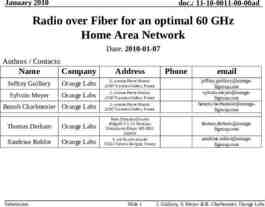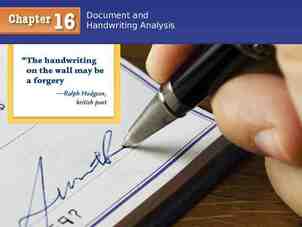From UCS-2 to UTF-16 Discussion and practical example for the
26 Slides214.00 KB

From UCS-2 to UTF-16 Discussion and practical example for the transition of a Unicode library from UCS-2 to UTF-16

Why is this an issue? The concept of the Unicode standard changed during its first few years Unicode 2.0 (1996) expanded the code point range from 64k to 1.1M APIs and libraries need to follow this change and support the full range Upcoming character assignments (Unicode 3.1, 2001) fall into the added range

“Unicode is a 16-bit character set” Concept: 16-bit, fixed-width character set Saving space by not including precomposed, rarely-used, obsolete, characters Compatibility, transition strategies, and acceptance forced loosening of these principles Unicode 3.1: 90k assigned characters

16-bit APIs APIs developed for Unicode 1.1 used 16-bit characters and strings: UCS-2 Assuming 1:1 character:code unit Examples: Win32, Java, COM, ICU, Qt/KDE Byte-based UTF-8 (1993) mostly for MBCS compatibility and transfer protocols

Extending the range Set aside two blocks of 1k 16-bit values, “surrogates”, for extension 1k x 1k 1M 10000016 additional code points using a pair of code units 16-bit form now variable-width UTF-16 “Unicode scalar values” 0.10ffff16 Proposed: 1994; part of Unicode 2.0 (1996)

Parallel with ISO-10646 ISO-10646 uses 31-bit codes: UCS-4 UCS-2: 16-bit codes for subset 0.ffff 16 UTF-16: transformation of subset 0.10ffff 16 UTF-8 covers all 31 bits Private Use areas above 10ffff16 slated for removal from ISO-10646 for UTF interoperability and synchronization with Unicode

21-bit code points Code points (“Unicode scalar values”) up to 10ffff16 use 21 bits 16-bit code units still good for strings: variable-width like MBCS Default string unit size not big enough for code points Dual types for programming?

C: char/wchar t dual types C/C standards: dual types Strings mostly with char units (8 bits) Code points: wchar t, 8.32 bits Typical use in I18N-ed programs: (8-bit) char strings but (16/32-bit) wchar t (or 32-bit int) characters; code point type is implementation-dependent

Unicode: dual types, too? Strings could continue with 16-bit units Single code points could get 32-bit data type Dual-type model like C/C MBCS

Alternatives to dual 16/32 types UTF-32: all types 32 bits wide, fixed-width UTF-8: same complexity after range extension beyond just the BMP, closer to C/C model – byte-based Use pairs of 16-bit units Use strings for everything Make string unit size flexible 8/16/32 bits

UCS-2 to UTF-32 Fixed-width, single base type for strings and code points UCS-2 programming assumptions mostly intact Wastes at least 33% space, typically 50% Performance bottleneck CPU - memory

UCS-2 to UTF-8 UCS-2 programming assumes many characters in single code units Breaks a lot of code Same question of type for code points; follow C model, 32-bit wchar t? – More difficult transition than other choices

Surrogate pairs for single chars Caller avoids code point calculation But: caller and callee need to detect and handle pairs: caller choosing argument values, callee checking for errors Harder to use with code point constants because they are published as scalar values Significant change for caller from using scalars

Strings for single chars Always pass in string (and offset) Most general, handles graphemes in addition to code points Harder to use with code point constants because they are published as scalar values Significant change for caller from using scalars

UTF-flexible In principle, if the implementation can handle variable-width, MBCS-style strings, could it handle any UTF-size as a compiletime choice? Adds interoperability with UTF-8/32 APIs Almost no assumptions possible Complexity of transition even higher than of transition to pure UTF-8, performance?

Interoperability Break existing API users no more than necessary Interoperability with other APIs: Win32, Java, COM, now also XML DOM UTF-16 is Unicode default: good compromise (speed/ease/space) String units should stay 16 bits wide

Does everything need to change? String operations: search, substring, concatenation, work with any UTF without change Character property lookup and similar: need to support the extended range Formatting: should handle more code points or even graphemes Careful evaluation of all public APIs

ICU: some of all Strings: UTF-16, UChar type remains 16bit New UChar32 for code points Provide macros for C to deal with all UTFs: iteration, random access, C CharacterIterator: many new functions Property lookup/low-level: UChar32 Formatting: strings for graphemes

Scalar code points: property lookup Old, 16-bit: UChar u tolower(UChar c){ u[v[c15.7] c6.0]; } New, 21-bit: UChar32 u tolower(UChar32 c){ u[v[w[c20.10] c9.4] c3.0]; }

Formatting: grapheme strings Old: void setDecimalSymbol(UChar c); New: void setDecimalSymbol(const UnicodeString &s);

Codepage conversion To Unicode: results are one or two UTF-16 code units, surrogates stored directly in the conversion table From Unicode: triple-stage compact array access from 21-bit code points like property lookup Single-character-conversion to Unicode now returns UChar32 values

API first Tools and basic functions and classes are in place (property lookup, conversion, iterators, BiDi) Public APIs reviewed and changed (“luxury” of early project stage) or deprecated and superseded by new versions Higher-level implementations to follow before Unicode 3.1 published

More implementations follow Collation: need to prepare for 64k primary keys Normalization and Transliteration Word/Sentence break iteration Etc. No non-BMP data before Unicode 3.1 is stable

Other libraries Java: planning stage for transition Win32: rendering and UniScribe API largely UTF-16-ready Linux: standardizing on 32-bit Unicode wchar t, has UTF-8 locales like other Unixes for char* APIs W3C: standards assume full UTF-16 range

Summary Transition from UCS-2 to UTF-16 gains importance after four years of standard APIs for single characters need change or new versions String APIs: no change Implementations need to handle 21-bit code points Range of options

Resources Unicode FAQ: http://www.unicode.org/unicode/faq/ Unicode on IBM developerWorks: http://www.ibm.com/developer/unicode/ ICU: http://oss.software.ibm.com/icu/






